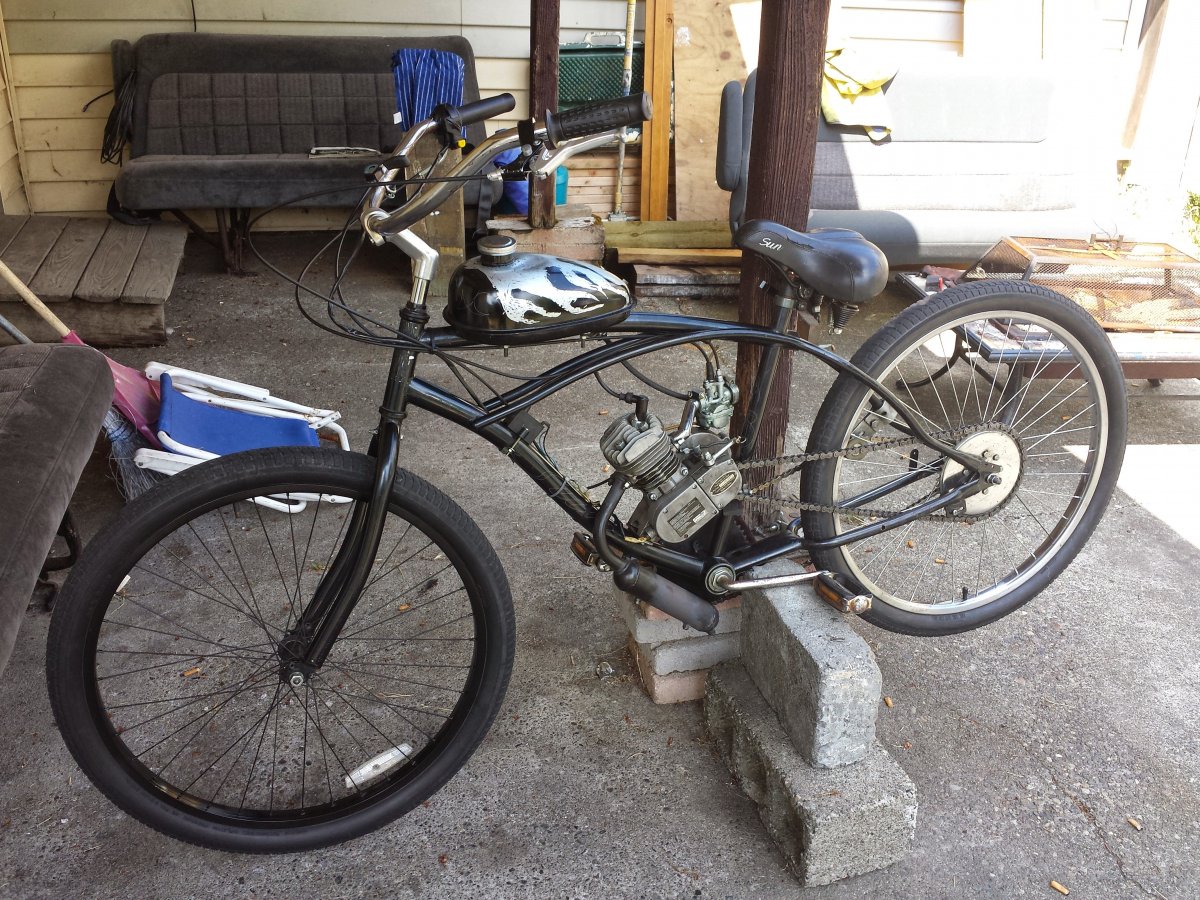40 miles is about 60kms, I am probably doing about that, maybe better on long flat trips, less on my full speed hill testing. As the weather warms up, I plan to ride to work, 45kms total trip and lots of hills. I better have the figures right for the first trip!
This is one of the things I plan to work on. I want the most out of my engine, including fuel mileage.
My KTM 125 Ran well in the dirt, but when I put it on the road, I only got 35mpg!
It was jetted "rich for safety" in all of the carbs ranges.
Leaning it out gave much better performance and mileage in the 55mpg range. Not great for a 125, but for the performance, not bad.
If I really wanted better fuel mileage out of it, I'd make it lower and leaner.
Same with the bikes I guess. Ergonomics take precedence over aerodynamics, otherwise we'd be running 20" tires and crouching or recumbent.
I think there is fertile ground for fuel mileage improvements.
As far as the original poster's chug-a-lug post, here is what worked for me.
A better squish area on the head chamber.
This is what the average China Girl head looks like:
Below is what it should look like.
Note the "Pockets" in the corners that can trap and compress gasses.
Note the small squish area that has little effect.
The drawing below is what an ideal combustion chamber should look like and shows the tornado like swirl that will sweep the flame front to complete combustion.
So what happens in the stock China Girl head at the moment of combustion? DETONATION.
Stagnant combustible mixture is trapped in the corners and feels a rapidly rising pressure wave that causes a spontaneous detonation of incomplete combustion. This hits the piston and head like a hammer, causing the Hurky-Jerky you feel at low speeds.
Below is the flame front you need for smooth combustion:
The large squish area "squirts" the mixture out to the combustion chamber in a swirling donut shaped tornado.
There is no room for pre-combustion or detonation in the cool narrow metal squish area (often also called quench area).
Smooth combustion is the secret to getting rid of the Chug-a-lug...
Steve









